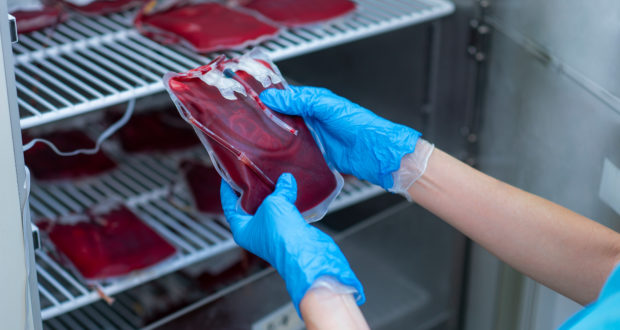The trend from hospital to home-based care, accelerated during the coronavirus pandemic, looks set to continue with the first evidence in Australia that regular blood transfusions can be safely performed by nurses in residential homes and aged care facilities.
The joint study, undertaken by the University of South Australia, the Royal District Nursing Service (RDNS) and SA Health, investigated 1,790 blood transfusions involving 533 patients in homes and aged care centres across South Australia from 2004 to 2019.
Lead researcher and lecturer in nursing at the University of SA Dr Rebecca Sharp says the study overwhelmingly supports home blood transfusions for medically stable patients.
“This is the first study in Australia so it’s the first to provide evidence that this is safe and the system is effective. It’s the same system that’s used in the hospital, just delivered in someone’s house or aged care facility,” Dr Sharp told Aged Care insite.
While most healthcare systems and procedures have traditionally been set up for clinicians, Dr Sharp believes it’s about time they meet the needs of consumers.
Visits to hospital every few weeks can be time-consuming, impractical and costly, she says, especially for many of those who live with haematological disorders such as anaemia, blood cancers and haemorrhagic conditions, which includes many aged care residents.
Many of them require time-consuming blood transfusions on a regular basis.
“To get into an outpatient department every few weeks or once a month is a burden and often a cost when you consider transport and parking,” Dr Sharp says.
“People really appreciate being able to have this done at home so it doesn’t interrupt their lives so much. They can even continue to work.”
Hospital visits can also be alienating and intimidating, she adds, with many consumers in the study describing outpatient departments as “noisy, frantic and chaotic”.
For elderly people and especially those with dementia, these experiences are intensified.
Often it’s enough to prevent the blood transfusion occuring at all, Dr Sharp says.
“For many elderly people and those with dementia, having to go to a hospital, navigate an outpatients department and then wait for their treatment can just be too difficult to facilitate.”
When people are confused and they have a line in, the first thing they do is pull it out because they just want to escape, she adds.
“For these people, they are more likely to have the treatment if they are in a familiar environment where they know the clinicians. That can really help with any behaviours they have.
“Plus they are less likely to acquire an infection from hospital.”
Performing blood transfusions at home has the added benefit of reducing the strain on hospitals by freeing up beds and resources that can be redirected towards other critical care, Dr Sharp says.
Low risk
A blood transfusion provided at home or in an aged care setting by the RDNS is performed by a highly trained nurse who is skilled in monitoring for any adverse reactions.
Throughout the study, there were only five cases of adverse events – less than one per cent of all care episodes. These reactions were not serious and were able to be managed by a registered nurse, Dr Sharp says.
In rare cases when the patient’s temperature rises during the transfusion and there is a risk of anaphylaxis, the nurse will stop the treatment and refer the patient to their GP. In most cases the transfusion will resume without incident in hospital.
The risk of an adverse reaction was unaffected by the gender and age of the patient and their setting in an aged care facility or a home, the study found.
Dr Sharp believes the demand on blood transfusions at home will only increase in time. This is because the likelihood of haematological disorders developing increases with age, and Australians are living longer than ever.
“We anticipate that home blood transfusions will increase in the future,” she says.
“Clinicians will see that the system is feasible, efficient and safe.”
Do you have an idea for a story?Email [email protected]
 Aged Care Insite Australia's number one aged care news source
Aged Care Insite Australia's number one aged care news source

